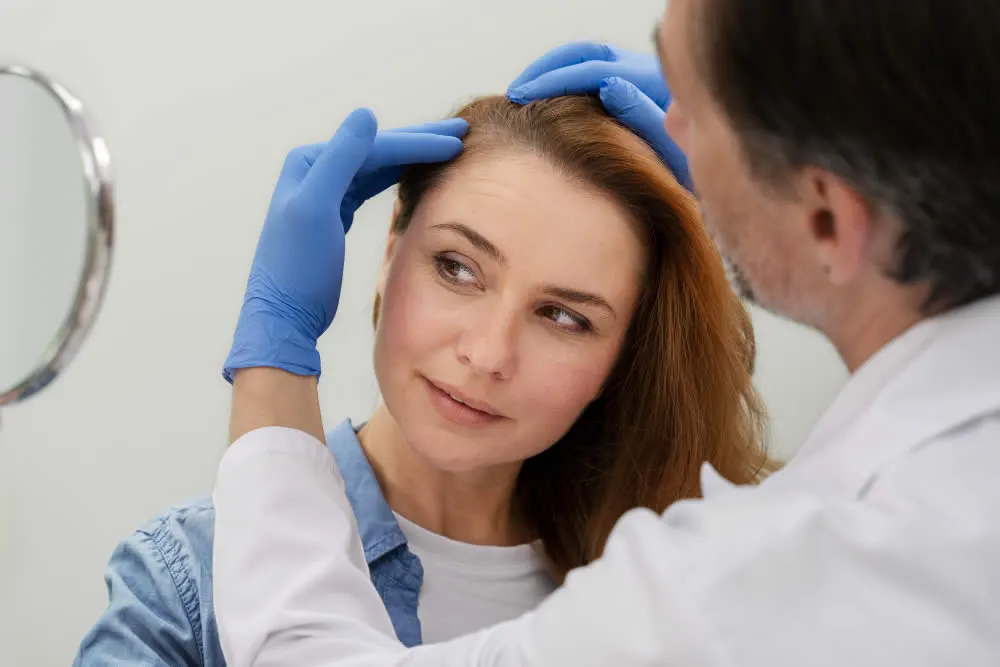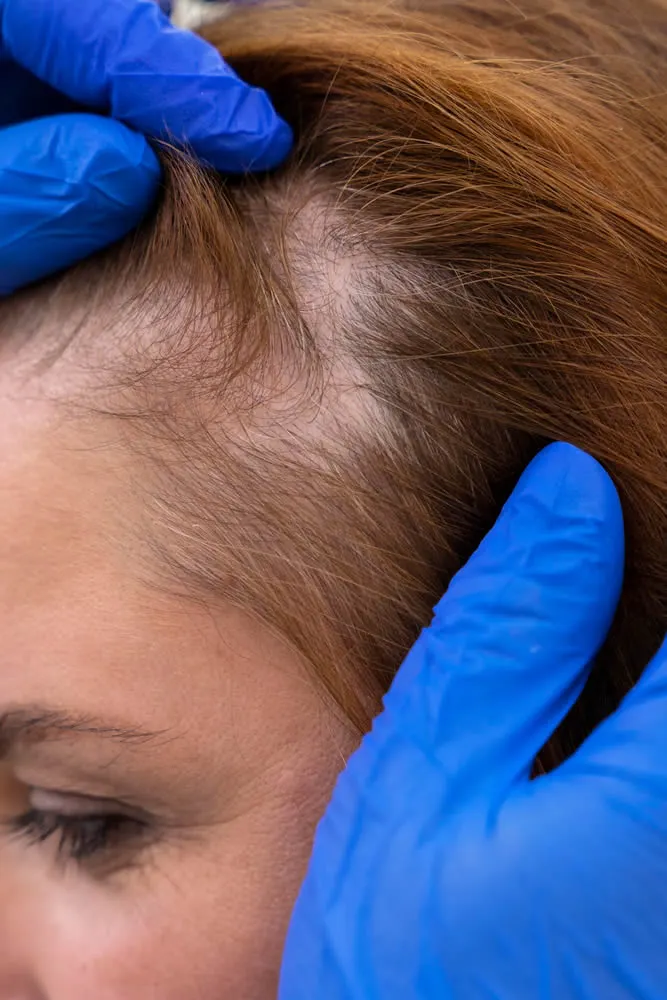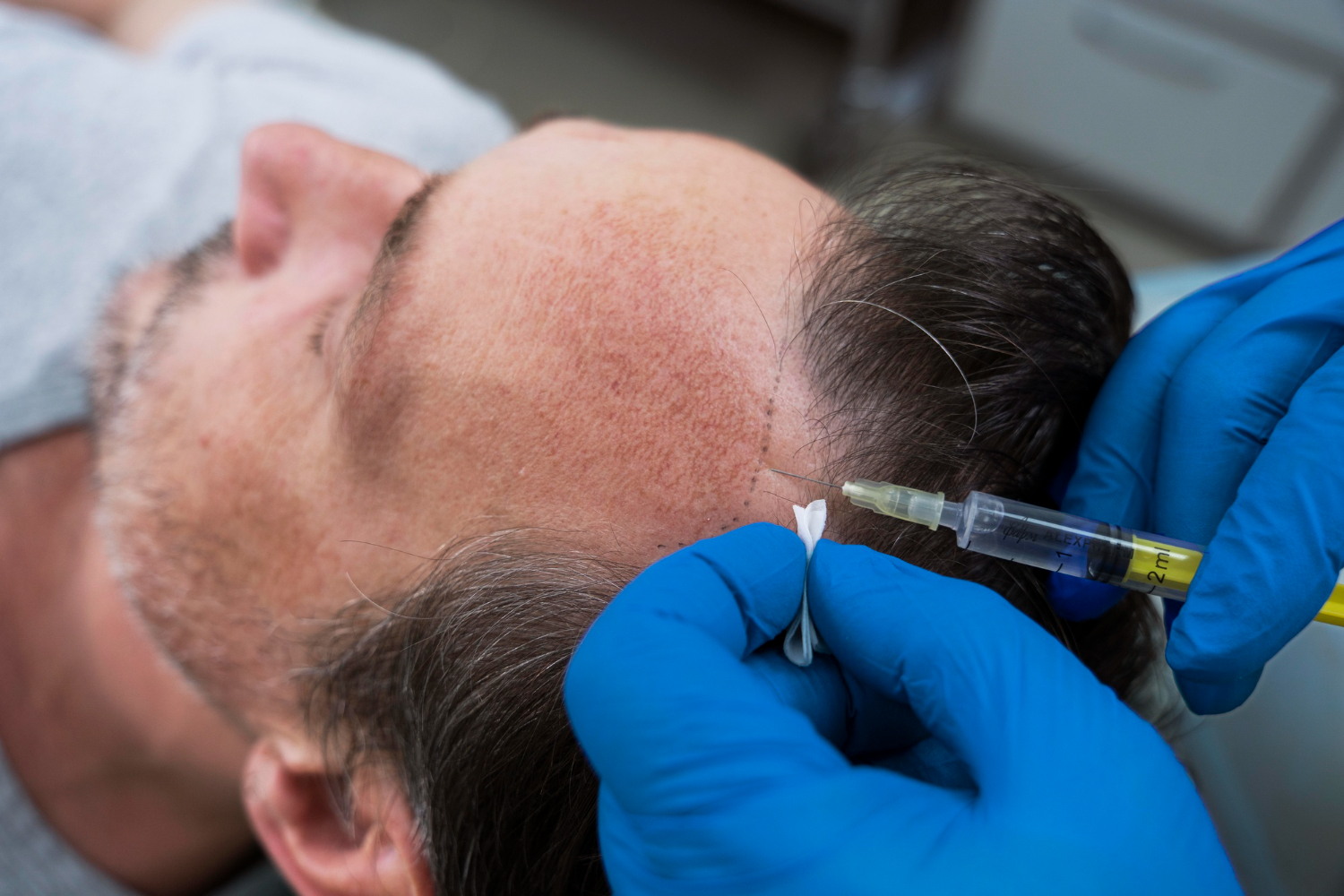What is Hair Restoration Therapy?
Hair Restoration Therapy encompasses a range of treatments and procedures designed to regenerate or stimulate hair growth on the scalp and other regions of the body. This therapy is for individuals experiencing hair thinning, hair loss, or the presence of bald patches.
Hair Restoration Therapy with Platelet-Rich Plasma (PRP). PRP is transforming the landscape of hair loss treatments by enabling the effective regeneration of hair without requiring a surgical procedure, resulting in a remarkably natural appearance. PRP is formulated using the individual’s regenerative blood components, thus negating any risk of an allergic reaction.
PRP injections are both efficacious and inherently safe, as they leverage the body’s innate healing properties to address hair loss and facilitate hair growth.

How does PRP for Hair Restoration work?
PRP hair restoration is a technique to invigorate hair follicles, resulting in more vigorous and robust hair growth. It is a common misconception that hair follicles not producing hair are deceased but may be damaged, compromised, or dormant. The growth factors present in platelet-rich plasma can activate adult stem cells in non-productive hair follicles, stimulate cell proliferation, and facilitate the formation of new blood vessels, transporting blood and nutrients to the rejuvenated follicles.
PRP Hair Restoration Procedure
Prior to initiating the treatment, a local anesthetic is administered to numb the designated areas of the scalp. PRP is then injected into the scalp using a fine needle, with a focus on the regions exhibiting the most pronounced hair loss. The injections are strategically administered in a specific pattern to optimize the regenerative potential of the PRP treatment. This strategic administration ensures that the growth factors in the PRP can effectively target and rejuvenate hair follicles, promoting healthier and stronger hair growth.
Who is a google candidate for PRP Hair Restoration Therapy?
The best candidates for PRP Hair Restoration Therapy are individuals in the early stages of hair loss, those with noticeable areas of thinning or a receding hairline, and patients with alopecia areata, telogen effluvium, or male and female pattern baldness (androgenic alopecia). Essentially, it is most effective for individuals with many active hair follicles.
However, PRP may not be suitable for everyone. Individuals with the following conditions are generally not suited for PRP injections:
- Autoimmune Disorders: Individuals with autoimmune disorders may not respond well to PRP therapy as their immune system may attack the treated areas.
- Chronic Liver Disease: Patients with chronic liver disease may have compromised blood quality, affecting the PRP preparation.
- Chronic Skin Conditions: Certain chronic skin conditions may affect the scalp’s response to PRP therapy.
- Low Platelet Count: Since PRP therapy relies on a high concentration of platelets, individuals with a low platelet count may not be suitable candidates.
- Active Scalp Infection: Any active infection on the scalp needs to be resolved before PRP therapy can be considered.
- Bleeding or Blood Clotting Disorders: PRP therapy involves injections, so individuals with bleeding or blood clotting disorders may face increased risks.
The dermatologist will determine the suitability for PRP Hair Restoration Therapy after thoroughly evaluating the patient’s medical history and current condition.
What to expect after Hair Restoration Therapy?
Post-treatment, most patients experience minimal discomfort, which can usually be managed with over-the-counter pain medications. It is common to have mild forehead swelling for one or two days following the procedure. It is advisable to avoid intense physical activity until the swelling has completely subsided. However, normal hair washing can commence immediately after treatment.
PRP Hair Restoration Results:
PRP injections for hair restoration is a safe, non-surgical treatment that offers fast recovery, no scarring, and natural-looking results. Many patients observe new hair growth and hair density and thickness improvement as early as two months post-procedure. However, optimal results typically become visible between four to eight months after the treatment, with continued improvement observed for up to one year. Many patients achieve dramatic, long-lasting results with a single treatment session.
Benefits of PRP Hair Restoration Therapy
PRP therapy for hair restoration capitalizes on the body’s growth factors’ healing properties to stimulate healthier and fuller hair regrowth by enhancing blood flow to the hair follicles, promoting cell growth, and repairing damaged scalp tissues.
Here are some key advantages that make it a popular choice for hair restoration:
- Natural Treatment: PRP therapy is an autologous treatment, meaning it utilizes the patient’s own blood, minimizing the risk of allergic reactions and other side effects. It harnesses the body’s natural healing properties by reactivating dormant hair follicles, stimulating new hair growth, and promoting a healthier scalp.
- Convenient and Non-Invasive: Unlike traditional hair transplant surgeries that involve incisions and a longer recovery period, PRP therapy is non-invasive. It involves quick blood draws and injections into the scalp, making it a convenient option for those seeking hair loss treatment without the downtime associated with surgical procedures.
- Minimal Downtime: PRP therapy has the added advantage of minimal downtime. Most patients can resume their daily activities shortly after treatment. The side effects are minimal, and there is almost no risk of an allergic reaction since the treatment uses the patient’s blood components.
- Customizable: Hair loss is a multifactorial condition that varies from person to person. PRP therapy can be tailored to each patient’s specific needs, considering the severity of their hair loss, current scalp health, and other factors. This personalized approach ensures the most effective treatment for each individual.
- High Success Rate: Clinical studies have demonstrated significant improvements in hair density and count after 4-6 treatments of PRP therapy. Patients often report high levels of satisfaction with the treatment and its results.
- Long-Lasting Results: While no treatment can permanently cure hair loss, PRP therapy can provide long-lasting results. Regular maintenance treatments can help sustain the health of the hair follicles and encourage continuous growth of denser, healthier hair.

FAQ About Hair Restoration Therapy
Is PRP Hair Restoration Therapy safe?
Yes, PRP therapy is generally considered safe since it uses your own blood, minimizing the risks of infections or allergic reactions.
How many PRP sessions will I need?
The number of sessions required varies from person to person. Your dermatologist will create a personalized treatment plan based on the extent of your hair loss and your desired results.
Is there any downtime after PRP Therapy?
There is minimal downtime after PRP therapy. Most patients can resume normal activities almost immediately after the treatment.
Are the results permanent?
While PRP can stimulate hair growth and slow down hair loss, it is not a permanent cure for baldness. Regular maintenance sessions may be needed to maintain the results.
Is there a dermatologist near me in Virginia Beach that offers Hair Restoration Therapy?
Yes. At our Virginia Beach dermatology office we offer Hair Restoration Therapy to patients from Virginia Beach and the surrounding area. Contact our office today to schedule an appointment.

